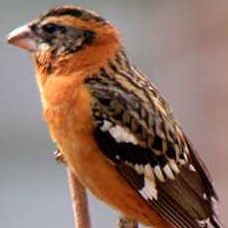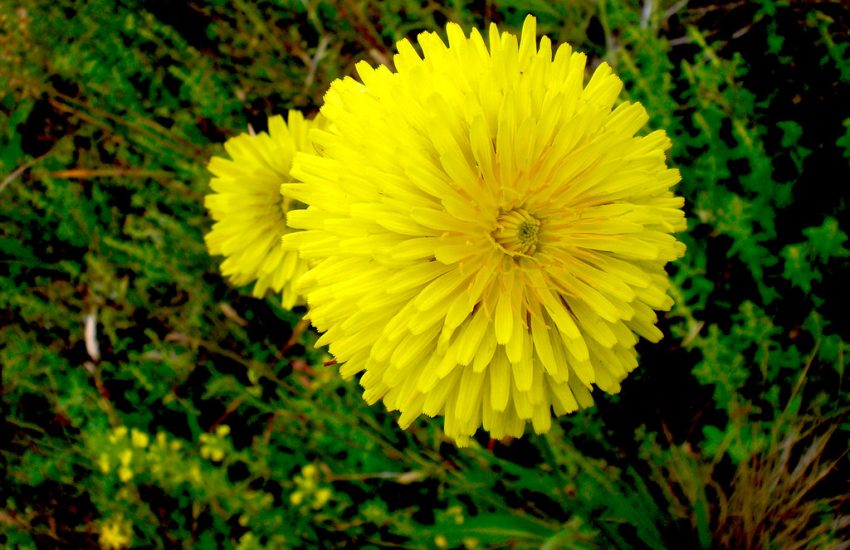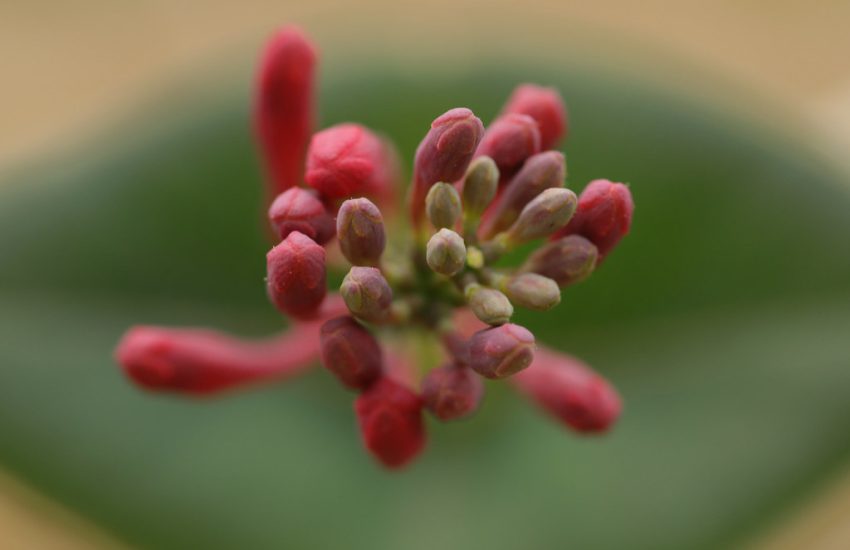Native Plant List for Arkansas, Louisiana, Eastern Oklahoma, and Eastern Texas

See Also:
- Plants Native to Oklahoma for Landscaping [with Pictures]
- The Best Texas Native Plants for Landscaping
This is a "starter" list of native plants for Arkansas, Louisiana, Eastern Oklahoma, and Eastern Texas. It is intended for residential or commercial landscapers who want to create attractive and varied native landscapes.
Arkansas, Louisiana, Eastern Oklahoma, and Eastern Texas Trees
| Common Name | Scientific Name | Sun | Moisture | Height | Comments |
|---|---|---|---|---|---|
| Florida Maple | Acer barbatum | P | W-A | 20-25' | Not as much fall clr as sug maple; seeds eaten by birds |
| Red Maple | Acer rubrum | P-S | W-D | 60-100' | One of 1st trees to show fall color; small red dense flwrs |
| Chalk Maple | Acer saccharum | P | A-D | 25-30' | Brilliant yellow-orange to crimson in fall; pest free |
| Red Buckeye | Aesculus pavia | F-S | W-A | 10-15' | Salmon/red flwrs in spring; attracts hummers and bees |
| River Birch | Betula nigra | F-P | W-A | 30-90' | Multistemmed desired; seeds attract birds |
| Blue Beech | Carpinus carolianiana | S | W-A | 35-50' | Good street tree; scarlet fall color |
| Hackberry | Celtis laevigata | F-P | W-A | 60-80' | Orange to blue-black, fruit attracts birds; yellow in fall |
| Redbud | Cercis canadensis | P-S | A-D | 15-30' | Rosy-pink flowers in spring; drought-tolerant; yellow in fall |
| Fringe Tree | Chionanthus virginicus | F-P | W-A | 15-25' | Creamy white fragrant flowers in May; dark blue fruit in fall |
| Flowering Dogwood | Cornus florida | P | A | 20-50' | 4" white bracts in April; fruit attracts birds; red fall color |
| Beech | Fagus grandifolia | P | A | 50-80+' | Hard to grow plants under; nuts attract birds/ squirrels |
| White Ash | Fraxinus americana | F-P | A | 75-120' | Purple in fall; larval plant for butterflies; seeds for birds |
| Green Ash | Fraxinus pennsylvanica | F | A | 50-75' | Adaptable tree; transplants well; green to purple flowers |
| Two-winged Silverbell | Halesia diptera | F-P | A | 20-30' | White to pink, bell-shaped flowers in spring |
| Carolina Silverbell | Halesia tetraptera | F-P | A | 20-60' | Similar culture to dogwood; white, bell-shaped flowers |
| Witch Hazel | Hamamelis virginiana | P | A | 15-35' | Creamy to bright yellow flowers in fall; golden fall color |
| Possum Haw | Ilex decidua | P | W-D | 15-30' | White flwrs in spring; orange berries into winter (female) |
| American Holly | Ilex opaca | F-S | A | 25-60' | Red berries into winter; must have both sexes for berries |
| Black Walnut | Juglans nigra | F | A | 50-70' | Green, rounded fruit; edible nuts with rough black shell |
| Sweet Gum | Liquidambar styraciflua | F-P | A | 60-75' | Seeds eaten by birds; spiny fruit litters lawns |
| Tulip Tree | Liriodendron tulipifera | F-P | A | 40-100' | Cup-shaped, fragrant flowers in spring; attracts birds |
| Cucumber Tree | Magnolia acuminata | F-P | A | 60-75' | Small, knobby fruit resembles a cucumber; attracts birds |
| Southern Magnolia | Magnolia grandiflora | F-P | A | 50+' | Should be planted where lowest branches reach ground |
| Sweetbay | Magnolia virginiana | P | W | 12-20+' | 2-3" white flwrs all summer; fruit attracts birds |
| Black Gum | Nyssa sylvatica | F-P | W-D | 30-60' | Yellow, orange, red-purple fall color; honey plant for bees |
| Ironwood | Ostrya virginiana | P-S | A | 30-50' | Fruiting clusters; shreddy bark; common understory tree |
| Red Bay | Persea borbonia | P | A | 20-65' | Blue fruit in fall; larval plant for swallowtails; birds like fruit |
| Shortleaf Pine | Pinus echinata | F-P | D | 50-100' | Dark, blue-green needles; seeds eaten by birds |
| Loblolly Pine | Pinus taeda | F-P | A | 60+' | 6-10" dark green leaves; most rapid growth of all pines |
| Sycamore | Platanus occidentalis | F-P | W-A | 75-100' | Round seeds; white, mottled bark; leaves drop all sum |
| White Oak | Quercus alba | F | A-D | 80-100' | Avoid planting near paved areas; red to wine fall color |
| Laurel Oak | Quercus laurifolia | F-P | W-A | 40-60' | Transplants well; shiny leaves; acorns |
| Willow Oak | Quercus phellos | F-P | A | 60+' | Yellow fall color; not as messy as some oaks |
| Carolina Buckthorn | Rhamnus caroliniana | P-S | A | 12-15' | Yellowish fall color; fruit changes from red to black |
| Sassafras | Sassafras albidum | F | W-D | 35-50' | Yellow, orange, pink, scarlet fall color; attracts birds |
| Bald Cypress | Taxodium distichum | F-P | W-A | 50-75' | Cypress knees produced in or near water; orange fall color |
Arkansas, Louisiana, Eastern Oklahoma, and Eastern Texas Shrubs
| Common Name | Scientific Name | Sun | Moisture | Height | Comments |
|---|---|---|---|---|---|
| Downy Serviceberry | Amelanchier arborea | F-S | A-D | 15-30" | Magenta fruit attracts birds; lrgst fruit of any serviceberry |
| False Indigo | Amorpha fruticosa | F | A-D | 6-10" | Deep purple flowers with gold stamens attract butterflies |
| Sea Myrtle | Baccharis halimifolia | F | W | 6-12" | Female plant covered with shiny white "clouds" in fall |
| Americ. Beautyberry | Callicarpa americana | P-S | W-A | to 6" | Small white to pink flowers in sumr; purple berries in fall |
| Chinquapin | Castanea pumila | P | A-D | to 30" | Spiked flowers; fall color; good food plant for wildlife |
| New Jersey Tea | Ceanothus americanus | F-P | A-D | 2-3" | Long-lasting flowers; attracts birds, butterflies, hummers |
| Buttonbush | Cephalanthus occidentalis | S-P | W-A | 10-15" | Creamy white flowers in sumr; nutlets through winter |
| Burning Bush | Euonymus atropurpureus | P-S | W-A | 20-25" | Purple flowers in June; persistent red seeds |
| Wild Hydrangea | Hydrangea arborescens | P-S | W-A | 3-6" | White lace cap flowers; attracts bees |
| Shrub. St. Johns Wort | Hypericum prolificum | S | W-D | 3" | Yellow flowers; attracts birds; no appreciable fall color |
| Winterberry | Ilex verticillata | P-S | W-A | 3-10" | Bright red berries on female plants into wint; attracts birds |
| Yaupon | Ilex vomitoria | F-S | W-D | 12-25" | White flowers; red berries; good screen plant; attracts birds |
| Sweetspire | Itea virginica | P | W-A | 6-8" | Red fall foliage; attracts butterflies; seeds eaten by birds |
| Spicebush | Lindera benzoin | P | A | 3-12" | All parts edible and aromatic; glossy red fruit |
| Maleberry | Lyonia lingustrina | F-P | W-A | 6-12" | White flowers in spring; fall color; honey plant |
| Sweet Azalea | Rhododendron canescens | Red foliage; pink/white flwrs; attracts birds and butterflies | |||
| Swamp Azalea | Rhododendron viscosum | Fall color; fragrant, white flwrs in sumr; forms a thicket | |||
| Shining Sumac | Rhus copallina | Male + female plants; maroon fall foliage; attracts birds | |||
| Smooth Sumac | Rhus glabra | Brilliant fall color; good in dry arrangement; not poisonous | |||
| Carolina Rose | Rosa carolina | Single, pink flowers in sumr; red hips in fall attract birds | |||
| Dwarf Palmetto | Sabal minor | Subterranean trunk; black fruits on flowering stalks | |||
| Elderberry | Sambucus canadensis | Creamy, white flowers; edible fruit; yellow fall foliage | |||
| Silky camellia | Stewartia malacodendron | Waxy white flowers; cinnamon colored bark; slow grower | |||
| American Silverbells | Styrax americana | Fragrant white flowers mid-spring; rounded form | |||
| Sparkleberry | Vaccinium arboreum | Tree-like shrub; white flowers; dark berries in fall | |||
| Black Haw | Viburnum prunifolium | Showy fall color; creamy white flowers; blue-black fruit |
Arkansas, Louisiana, Eastern Oklahoma, and Eastern Texas Flowering Perennials
| Common Name | Scientific Name | Comments |
|---|---|---|
| Sweet Flag | Acorus calamus | Grass-like appearance; grows in wet areas |
| False Aloe | Agave virginica | Inch-long flowers in a loose spike |
| Blue Star | Amsonia tabernaemont. | Light blue flowers; black seeds can be used for propagation |
| Carolina Anemone | Anemone caroliniana | Spring bloomer; blossom resembles sunflower |
| Lazy Daisy | Aphanosteph. skirrhobasis | Attracts butterflies; xeriscapic |
| Jack-in-the-Pulpit | Arisaema triphyllum | Red and yellow flowers; perfect for shady gardens |
| Wild Ginger | Asarum canadensis | Good shade ground cover; slug pollinated |
| Swamp Milkweed | Asclepias incarnata | All parts are poisonous |
| Butterfly Weed | Asclepias tuberosa | Adult nectar and larval food source for Monarch butterflies |
| Frost Aster | Aster pilosus | One of the toughest asters; attracts butterflies |
| White False Indigo | Baptisia alba | Drought-tolerant; parts are poisonous if ingested |
| Poppy Mallow | Callirhoe papaver | Grows well over walls and in rock gardens |
| Wild Hyacinth | Camassia scilloides | Blue, star-shaped flowers in an elongated, loose cluster |
| American Bellflower | Campanula americana | Star-shaped light violet-blue flowers |
| Tall Coreopsis | Coreopsis tripteris | Anise-like fragrance |
| Shooting Star | Dodecatheon meadia | Lilac, pink or white petals; stamens form a beak-like cone |
| Clasping Leaf Conefl. | Dracopis amplexicaulis | Attracts birds, small mammals, and butterflies |
| Purple Coneflower | Echinacea purpurea | Tolerates dry, droughty soil and hot sun; good cut flowers |
| Rattlesnake Master | Eryngium yuccifolium | Greenish-white flowers in globular, 1' diameter heads |
| Mist Flower | Eupatorium coelestinum | Eight weeks of blue flowers; spreads by rhizomes |
| Joe-Pye Weed | Eupatorium fistulosum | Rounded, pink flower clusters mid-summer to early fall |
| Closed Gentian | Gentiana saponaria | Light-blue to lilac flowers; soapy sap |
| Wild Geranium | Geranium maculatum | 1' purple flowers; slender capsules resemble a crane's bill |
| Narrow-leaf Sunfl. | Helianthus simulans | Attracts birds and butterflies |
| Ox-eye Sunflower | Heliopsis helianthoides | Resembles sunflower on a shorter plant |
| Alumroot | Heuchera americana | Root has astringent qualities |
| Spider Lily | Hymenocallis occidentalis | 3-4' flowers with crown of tissue connecting bases of anthers |
| Standing Cypress | Ipomopsis rubra | Red, tubular flowers; leaves with bristle-tipped segments |
| Marsh Blazing Star | Liatris spicata | Unusual in flowering from top to bottom of spike |
| Blazing Star | Liatris squarrosa | 1' delicate flowers on branched stems |
| Cardinal Flower | Lobelia cardinalis | Cardinal red flowers in late summer |
| Great Blue Lobelia | Lobelia siphilitica | Elongated cluster of pale to dark blue flowers on stalk |
| Partridge Berry | Mitchella repens | White to pinkish flowers; red double berries; rich soil |
| Wild Bergamot | Monarda fistulosa | Fragrant; dried leaves make herbal tea |
| Sundrops | Oenothera fruticosa | Red stems compliment yellow flowers |
| Carolina Phlox | Phlox carolina | Earlier flowering, with thicker leaves than common phlox |
| Blue Phlox | Phlox divartica | Semi-evergreen foliage |
| Obedient Plant | Physostegia virginiana | Flowers can be twisted in any direction and stay there |
| May Apple | Podophyllum peltatum | Solitary flower at fork of 2 leaf stalks; small edible fruit |
| Solomon's Seal | Polygonatum biflorum | Beautiful, arching stem with perfectly oriented leaves |
| Meadow Beauty | Rhexia virginica | Bright, purple-pink flowers open in a.m., drop petals |
| Black-eyed Susan | Rudbeckia fulgida | A popular, tough and beautiful perennial |
| Cut-leaf Coneflower | Rudbeckia laciniata | 6-10 droopy yellow petals around green center |
| Bloodroot | Sanguinaria canadensis | Bright orange-red sap in thick rootstock |
| Golden Ragwort | Senecio aureus | Cluster of daisy-like yellow flower heads |
| Fire Pink | Silene virginica | 1' brilliant red star-shaped flowers |
| Wreath Goldenrod | Solidago caesia | Clusters of yellow flowers from axils of leaves |
| Sweet Goldenrod | Solidago odora | Has an anise-like odor when crushed |
| Rough-leaved Golden. | Solidago rugosa | Radiating flower form looks like fireworks |
| Indian Pink | Spigelia marilandica | Clusters of 2 to 12 vivid red tubular flowers |
| Rose Vervain | Verbena canadensis | Very attractive to butterflies; clumps of purple flowers |
| Culver's Root | Veronicastrum virginicum | Spire-like white flower stalks above deep green leaves |
| Common Blue Violet | Viola papilionacea | This is the violet often found growing wild by roads/in fields |
| Birdsfoot Violet | Viola pedata | Five petals, lavender to purple, occasionally white |
Arkansas, Louisiana, Eastern Oklahoma, and Eastern Texas Flowering Perennial Ferns
| Common Name | Scientific Name | Comments |
|---|---|---|
| Southern Maidenhair | Adiantum capillus-veneris | Bright green fronds; spreads by rhizomes |
| Ebony Spleenwort | Asplenium platyneuron | Sterile fronds are arching to flat; fertile fronds are upright |
| Sensistive Fern | Onoclea sensibilis | Easy to grow; turns yellow or russet in fall |
| Cinnamon Fern | Osmunda cinnamomea | Circular cluster of fronds; cinnamon-colored fertile fronds |
| Royal Fern | Osmunda regalis | Easy to grow; fronds are pale pink in early spring |
| Christmas Fern | Polystichum acrostichoides | Easy to grow; tufted clump of stiff, deep green fronds |
| Virginia Chain Fern | Woodwardia virginica | Lustrous, dark green, leathery fronds in a close mass |
Arkansas, Louisiana, Eastern Oklahoma, and Eastern Texas Vines
| Common Name | Scientific Name | Comments |
|---|---|---|
| Cross Vine | Bignonia capreolata | Twining tendrils bear orange-red trumpet-shaped flowers |
| Leatherflower | Clematis crispa | Blue, pink, lavender or white; dies to ground each year |
| Virgin's Bower | Clematis virginiana | White flowers in late summer to early fall |
| Yellow Jessamine | Gelsemium sempervirens | Foliage bronzes in winter; all parts of plant are toxic |
| Coral Honeysuckle | Lonicera sempervirens | Trumpet-shaped flowers mid-spring to fall attract hummers |
| Virginia Creeper | Parthenociss. quinquefolia | Excellent red fall color; attracts birds |
| Passionflower | Passiflora incarnata | Lavender flowers; edible fruit; attracts butterflies |
Arkansas, Louisiana, Eastern Oklahoma, and Eastern Texas Grasses & Grass-like
| Common Name | Scientific Name | Comments |
|---|---|---|
| Big Bluestem | Andropogon gerardi | Long-lived; slow to establish; self-seeds; orange in fall |
| Splitbeard Bluestem | Andropogon ternarius | Great cut flowers |
| Broom Sedge | Andropogon virginicus | A pioneer soil-stabilizing plant |
| Awl-fruited Sedge | Carex stipata | R elatively large green-to-black, spike-like inflorescence |
| Inland Sea Oats | Chasmanthium latifolium | Golden in fall; reseeds in moist gardens |
| Purple Lovegrass | Eragrostis spectabilis | Inflorescence in late summer appears as red-purple clouds |
| Soft Rush | Juncus effusus | Provides food and nesting to birds and other wildlife |
| Rice Cut Grass | Leersia oryzoides | Creeping perennial with flat, yellow-green leaves |
| Gulf Muhly | Muhlenbergia capillaris | Dark green, glossy leaves; dark purple inflorescence |
| Switchgrass | Panicum virgatum | Dark gold fall color; inflorescence holds into winter |
| Little Bluestem | Schizachyrium scoparium | Self-seeds; variable form and color |
| Woolgrass | Scirpus cyperinus | Long, shaggy brown inflorescence |
| Indian Grass | Sorghastrum nutans | Warm season grass; attractive most of winter; self-seeds |
| Eastern Gamagrass | Tripsacum dactyloides | Easy to grow; evergreen in frost-free areas |
| Cattail | Typha latifolia | Long green leaves; hotdog-shaped brown flower |
| Sun Exposure | Soil Moisture | Drought Tolerance |
|---|---|---|
| F = Full Sun | W = Wet | E = Excellent |
| P = Part Sun | A = Average | G = Good |
| S = Shade | D = Dry | M = Moderate |
| P = Poor |


